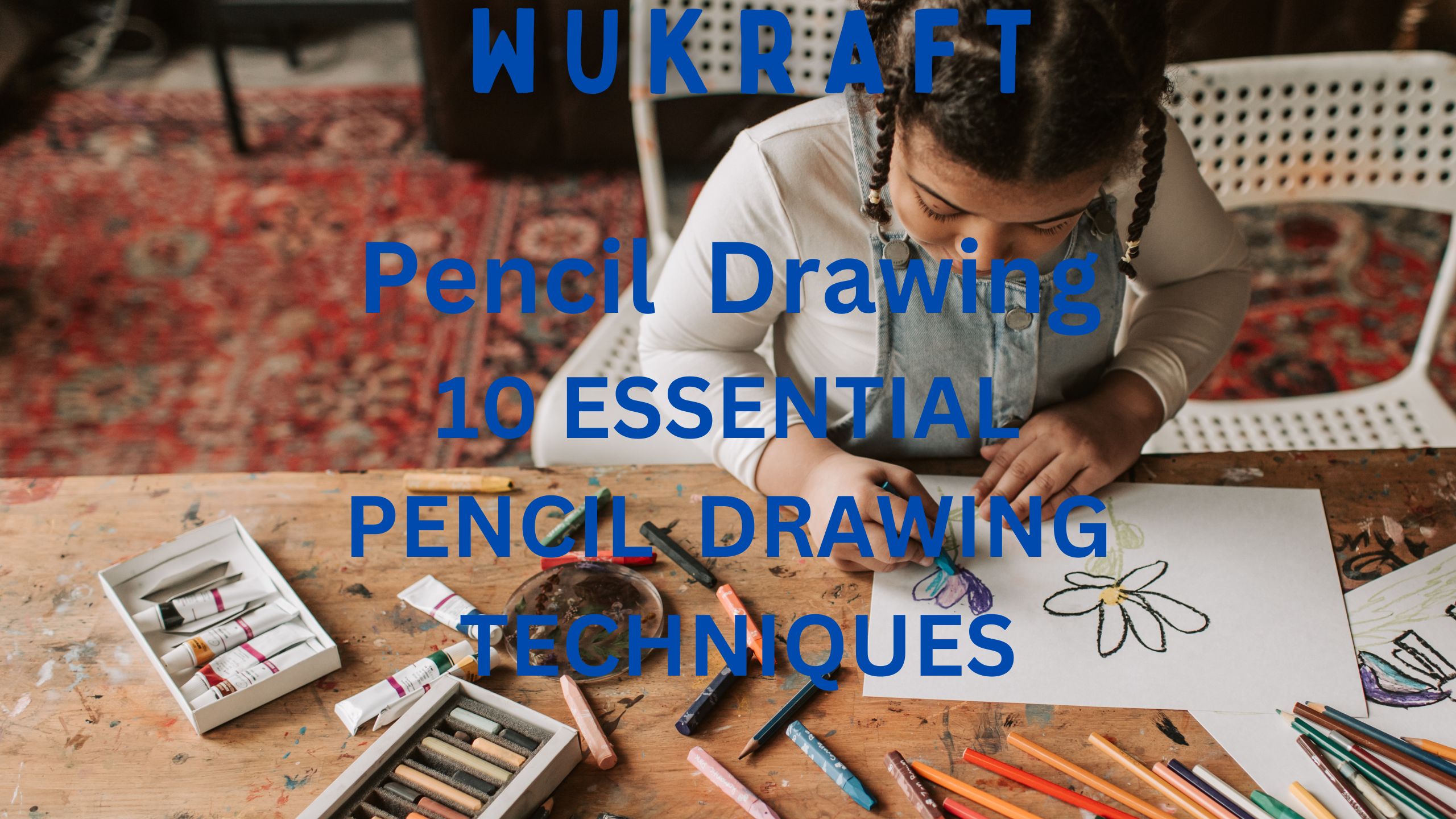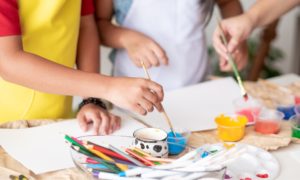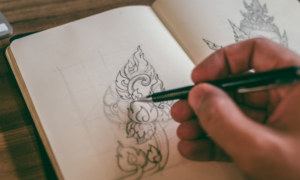Pencil drawing, a timeless and versatile form of artistic expression, has captured the imagination of countless artists throughout history. Its simplicity and accessibility make it an ideal medium for both beginners taking their first steps into the world of art and seasoned artists seeking to refine their skills. Whether you’re an aspiring artist or a seasoned professional, understanding and mastering essential pencil drawing techniques is paramount to your creative journey.
In this blog, we embark on an artistic exploration as we delve into the world of pencil drawing. We’ll unravel the secrets behind ten fundamental pencil drawing techniques, each of which plays a vital role in creating captivating and expressive works of art. These techniques are the very building blocks of pencil art, and by the end of this journey, you’ll not only be acquainted with them but poised to wield them with confidence and creativity.
Pencil drawing is more than just creating lines on paper; it’s a means of communicating ideas, emotions, and stories. These ten techniques are the keys to unlocking the full potential of your creativity and enabling you to bring your artistic vision to life. We’ll start with the basics and progress to more advanced methods, allowing you to grow and develop your skills step by step.
From the delicate strokes of hatching and cross-hatching to the subtlety of blending and the precision of contour lines, each technique is a brushstroke in your artistic arsenal. They provide you with the means to convey light and shadow, texture, and depth, making your drawings come alive on the page.
But pencil drawing isn’t merely about mastering these techniques in isolation. It’s about understanding how to blend and adapt them to suit your creative needs. Throughout this exploration, you’ll not only learn each technique but also discover how to combine and integrate them harmoniously, transforming your drawings from static lines to dynamic and evocative visual narratives.
So, whether you’re a newcomer eager to begin your artistic voyage or an experienced artist looking to further your skills, these ten essential pencil drawing techniques are your passport to an enriching and fulfilling journey. Let’s embark on this artistic adventure and uncover the secrets that will enable you to create captivating and expressive pencil drawings.
1. Hatching and Cross-Hatching
Hatching: The Art of Parallel Line:
Hatching is a fundamental pencil drawing technique that involves the creation of parallel lines to represent value and texture. These lines can be closely spaced or more widely spaced, and the direction and angle of the lines play a critical role in the final appearance of the drawing.
Basic Steps to Achieving Effective Hatching:
Line Direction: The direction of your hatching lines is crucial. It can be vertical, horizontal, or diagonal, and the choice should depend on the object or texture you’re drawing.
Line Consistency: Maintain consistent line spacing and pressure to create even tones. Uneven hatching lines can disrupt the flow of the drawing.
Varying Pressure: Applying varying pressure to your pencil strokes can create gradients and a more natural transition between light and shadow.
Layering: Overlapping layers of hatching can deepen shadows and enhance the three-dimensionality of your subject.
Hatching is not just about creating flat, monotone surfaces. It is about using the lines as building blocks for subtle gradients and texture. With practice, you can achieve remarkable effects, from the softness of a furry animal’s coat to the smoothness of a polished wooden surface.
Cross-Hatching: Adding Depth and Dimension
Cross-hatching takes the concept of hatching a step further by overlapping multiple sets of parallel lines. This technique is used to create darker areas or add depth and dimension to your drawings.
The Principles of Cross-Hatching:
Angle Variation: When you cross-hatch, change the angle of your lines with each new set. This produces a mesh of lines that effectively deepens shadows and creates texture.
Layering and Overlapping: Similar to hatching, cross-hatching benefits from layering. By applying more layers in denser areas, you can achieve richer, darker values.
Controlled Chaos: Cross-hatching doesn’t have to be perfect or symmetrical. Some of the most interesting textures and effects come from the controlled chaos of varied lines.
By mastering cross-hatching, you can add a new level of intricacy and depth to your pencil drawings. It’s a technique that can breathe life into your artwork, making it more visually engaging and captivating.
In the world of pencil drawing, hatching and cross-hatching are the keys to creating intricate textures, realistic shadows, and captivating drawings. By understanding and mastering these techniques, you’ll gain the ability to imbue your artwork with depth and dimension, and you’ll be well on your way to creating stunning pencil drawings that are not just lines on paper, but visual stories waiting to be told.
2. Contour Lines:
Unraveling the Essence of Contour Lines:
Contour lines are the outer edges or outlines of an object, defining its shape and form. These lines represent the points at which the subject meets its surroundings or other elements within the composition. They are, in essence, the borders that help us understand and appreciate the structure of what we’re drawing.
The Basic Principles of Contour Lines:
Steady Hand: Creating clean and precise lines is essential when drawing contours. The steadiness of the hand is key to achieving a well-defined outline.
Observation: Contour drawing often involves looking at your subject more than your paper. Pay close attention to the subject’s edges, and avoid lifting your pencil until you’ve captured the entire outline.
Varying Line Weight: Contour lines can vary in thickness and darkness. Typically, the lines representing the visible, well-defined edges are darker, while lines in the background or representing hidden edges may be lighter or thinner.
Expression and Style: Contour lines don’t have to be uniform; they can vary in style and character to reflect the mood or intention of your drawing. This allows for creative expression and artistic interpretation.
Contour lines serve as the scaffolding upon which the rest of your drawing is built. They help you establish proportions, relationships between elements, and the overall structure of your subject. They’re not just the boundaries but the foundation of your artwork.
Expressive Possibilities with Contour Lines:
The beauty of contour lines lies in their ability to convey emotion, movement, and character in your drawings. While they primarily represent the shape of the subject, they can be used to express more than just form.
Contour Quality: The character of your contour lines, whether smooth, jagged, or flowing, can communicate the texture and mood of your subject. For instance, bold and jagged contours might suggest rugged terrain, while smooth, flowing lines can evoke a sense of calm and tranquillity.
Gestural Lines: In figurative drawing, contour lines can be used to capture the gestural essence of the subject. Quick, expressive contour lines can portray the energy and movement of a figure, providing a sense of life and vitality.
Implied Volume: Contour lines can be used to suggest the three-dimensionality of your subject. By varying line weight and using cross-contour lines that follow the form, you can convey depth and volume effectively.
In the world of pencil drawing, contour lines are the storytellers, narrating the tales of shape, form, and expression. With a keen eye, a steady hand, and a creative spirit, you can harness the power of contour lines to infuse your drawings with life and character. Whether you are sketching a still life, a portrait, or a landscape, mastering this essential technique will enable you to create drawings that not only capture the visual but also the emotional essence of your subject. Contour lines, in their simplicity, hold the potential to transform your artistic journey into an expressive and engaging visual experience.
3. Blending:
Unveiling the Beauty of Blending:
Blending involves softening or smudging pencil strokes to create smooth and gradual transitions between different shades and tones. This technique is not limited to a specific style or subject matter – it is the bridge that connects the contrasting elements within your artwork.
The Basics of Blending:
Blending Tools: Various tools and methods for blending in pencil drawing exist. The most common tools include blending stumps, tortillions, tissue paper, and even your fingertip. Each tool offers a different level of control and effect.
Controlled Pressure: Blending requires a delicate touch. You must control the amount of pressure applied when smudging to achieve the desired level of blending. Light pressure yields subtle transitions, while heavier pressure creates bolder smudges.
Layering and Gradation: Blending works best when you have already applied layers of pencil marks. Start with a light layer of shading and gradually build up the tones. The more layers you have, the smoother the transitions will be.
Texture and Direction: The texture and direction of your blending strokes can also affect the final result. Experiment with different techniques to achieve various textures and effects, from smooth gradients to textured surfaces.
The Alchemy of Blending:
Blending is not merely a mechanical process; it is a form of artistic alchemy. This technique possesses the power to breathe life into your drawings in several ways:
Creating Smooth Gradients: Blending allows you to seamlessly transition from light to shadow, or between colors, creating realistic gradients. This is essential when rendering objects with subtle tonal variations, such as skin, fabric, or natural landscapes.
Highlighting and Shading: Blending can be used to soften harsh shadows and highlights, making them appear more natural. It is beneficial when drawing reflective or glossy surfaces, as it helps to achieve the desired sheen.
Enhancing Realism: By blurring the lines between different elements, blending can enhance the overall realism of your drawings. It eliminates the stark contrast between distinct areas, mimicking the way light interacts with the surfaces of objects.
Creating Depth and Texture: The careful application of blending can give your drawings a three-dimensional quality, providing depth and texture. For example, it can mimic the softness of skin, the roughness of tree bark, or the smoothness of glass.
In the world of pencil drawing, blending is the artful process that transforms raw strokes into harmonious transitions, elevating your drawings to new levels of depth, realism, and expression. Whether you are creating portraits, landscapes, or still life, mastering this essential technique allows you to capture the subtleties of light and shadow and infuse your drawings with a sense of life and dimension. It is the bridge that unites the separate elements of your artwork, ultimately turning a collection of lines into a visual masterpiece.
4. Erasers
Beyond Correction: The Various Types of Erasers
Erasers come in a variety of forms, each tailored for specific purposes in pencil drawing. Understanding these variations and their applications can help you utilize erasers to their fullest potential.
1. Kneaded Erasers:
Kneaded erasers are pliable and moldable, making them perfect for lifting graphite or charcoal gently from the paper. They are excellent for creating highlights, blending, and correcting small errors without damaging the paper.
2. Vinyl Erasers:
Vinyl erasers are known for their precision. They can erase pencil marks cleanly without smudging and are suitable for fine details. They are also effective at removing coloured pencil marks.
3. Gum Erasers:
Gum erasers are slightly abrasive and are useful for lifting heavier graphite marks. They work well for larger areas but should be used with care to avoid paper damage.
4. Precision Erasers:
Precision erasers, often found in mechanical pencil erasers, offer a fine point for controlled erasing. These are ideal for intricate details and precise corrections.
Elevating Your Art with Erasers
Erasers, in the hands of an artist, have the power to transform a drawing from good to exceptional. Here’s how erasers can be utilized for creative purposes:
1. Creating Highlights:
Kneaded erasers are ideal for adding highlights. By gently lifting graphite or charcoal in specific areas, you can make elements of your drawing appear as if they catch the light, enhancing realism.
2. Refining Details:
Precision erasers, with their fine points, allow for the precise correction of small mistakes and the addition of intricate details. They are indispensable when working on portraits or intricate textures.
3. Texture and Shading:
Various erasers can be employed to create textures and shading effects. By using a kneaded eraser to “dab” at the paper or a gum eraser with controlled strokes, you can add texture and depth to your drawings.
4. Blending and Gradation:
Erasers can be used in conjunction with blending tools to create smooth gradients and transitions between light and shadow. This technique can be particularly effective in creating a realistic skin texture in portraits.
Erasers: The Artists’ Secret Weapon
Erasers, far from being simple tools for correction, are an artist’s secret weapon for adding highlights, refining details, and enhancing the overall quality of pencil drawings. When harnessed creatively, erasers offer a world of possibilities for elevating your work to new heights of precision and artistry. Whether you are creating portraits, landscapes, or still life, understanding the various erasers and their applications allows you to transform your sketches into fully realized masterpieces. So, the next time you reach for your eraser, consider the creative potential it holds in your artistic journey.
Learn more drawing techniques…
We’re excited to share with you another insightful blog post that delves into the world of art and creativity. In our latest article, we explore the ’10 Essential Drawing Techniques Every Artist Should Know.’ Whether you’re a seasoned artist or just starting on your creative journey, these techniques are fundamental to mastering the art of drawing. So, without further ado, let’s dive into the world of artistic expression and discover the key skills that every artist should have in their toolkit.
watch this tutorial to learn pencil drawing techniques
Conclusion:
In the world of art, pencil drawing stands as a timeless and versatile medium that allows artists to express their creativity and convey their unique perspectives. Throughout this exploration of ten essential pencil drawing techniques, we have journeyed through the realm of lines, texture, shading, and precision. We’ve uncovered the secrets and nuances behind each technique, and in doing so, equipped you with a comprehensive understanding of the art of pencil drawing.
These techniques, from hatching and cross-hatching to the subtlety of blending and the precision of contour lines, serve as the building blocks of your artistic arsenal. They allow you to breathe life into your drawings, bringing forth intricate textures, realistic shadows, and captivating visual narratives.
But pencil drawing is more than just mastering these techniques in isolation; it’s about understanding how to blend and adapt them to suit your creative needs. Throughout this journey, you have not only learned each technique but also discovered how to combine and integrate them harmoniously. This knowledge empowers you to create drawings that transcend mere lines on paper, transforming them into dynamic and evocative visual stories.
Pencil drawing, as we have explored, is a means of communication, a way to convey ideas, emotions, and stories. The ten essential techniques unveiled in this exploration are the keys to unlocking the full potential of your creativity and enabling you to bring your artistic vision to life.
Whether you are a newcomer eager to embark on your artistic voyage or an experienced artist looking to further your skills, these techniques are your passport to an enriching and fulfilling artistic journey. With each pencil stroke and each line you draw, you embark on a creative adventure, one where you can express yourself, tell your stories, and bring your imagination to life.
In the world of art, possibilities are boundless, and the journey is ongoing. As you continue to hone your skills and refine your technique, remember that the most important aspect of art is your unique perspective and creativity. These techniques are your tools, your means of expression, but what you create with them is a reflection of your artistic soul.
So, as you pick up your pencil, remember the knowledge you’ve gained here, and let it serve as a guiding light in your artistic path. Create, experiment, and never stop exploring the endless horizons of pencil drawing. With each stroke, you become the author of your own artistic story, and your drawings, your visual poetry. The world of pencil drawing is open, waiting for you to continue your artistic adventure and uncover the secrets that will enable you to create captivating and expressive pencil drawings.




